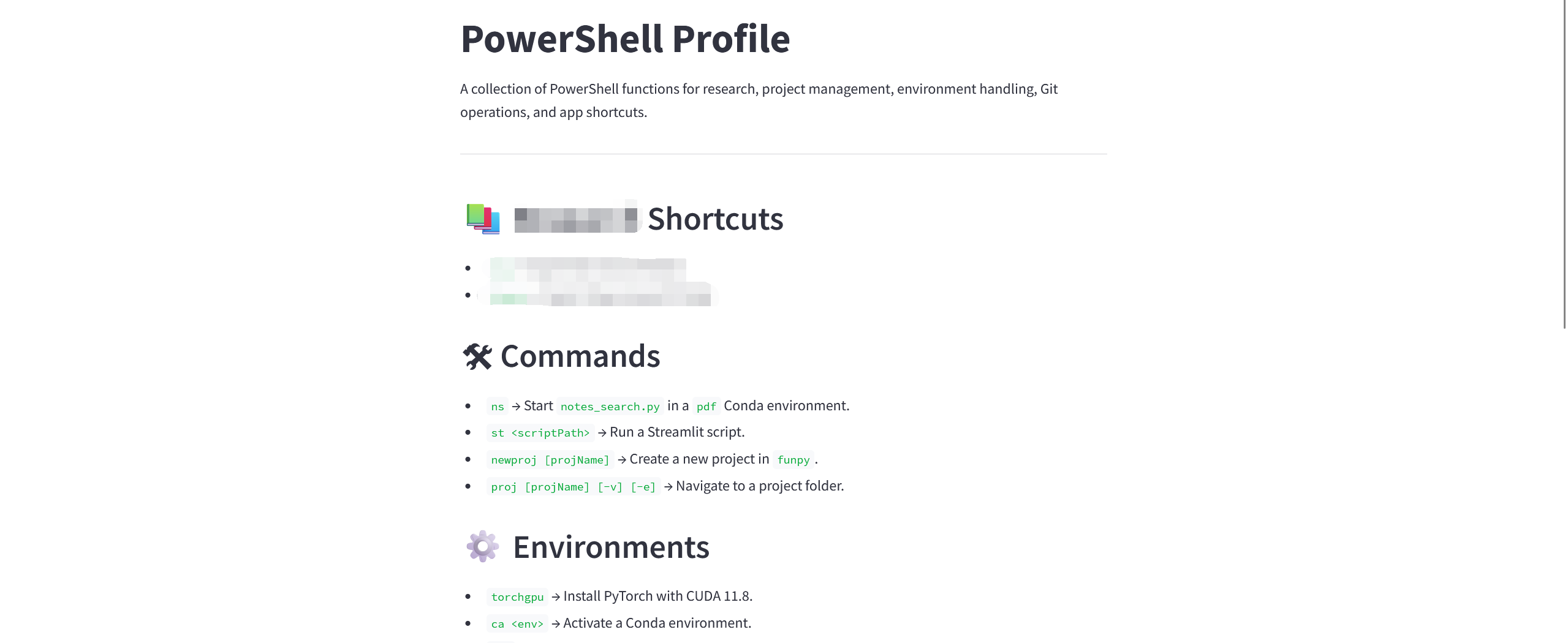SanBingYouYong

UoE BSc Computer Science First-class Honours --> Imperial MSc Advanced Comput'ing
Windows Terminal bashrc-like Customization
-
使用
echo $PROFILE查看你的Windows Terminal使用的是哪个profile.ps1文件
- 允许本地编写的脚本,搜索关键词:remote signed
- 使用
. $PROFILE来像source ~/.bashrc一样让你的改动生效,或重启终端 - 定义常量 (
export xxx=xxxxxx):Set-Variable -Name “xxx” -Value “xxxxxxx” -Option Constant- 就可以使用$xxx来使用他们了
- 或者直接使用
$xxx = xxxxxx
- 定义方法(
alias f="xxxx"):function f { xxxx }- 这方面大模型玩的比你溜
- 比如:
- 快速打开你的神奇妙妙工具库:
function proj { param ( [string]$projName, [switch]$vscode, [switch]$explorer ) if ($projName) { $projPath = Join-Path -Path $funpy -ChildPath $projName if (Test-Path $projPath) { Set-Location $projPath if ($explorer) { explorer.exe . } if ($vscode -or -not $explorer) { code . } } else { Write-Error "The project '$projName' does not exist." } } else { Get-ChildItem -Path $funpy -Directory | ForEach-Object { $_.Name } } }
- 快速打开你的神奇妙妙工具库:
- 你说的很好,但是定义了这么多,我忘了怎么办?
-
https://stackoverflow.com/questions/15694338/how-to-get-a-list-of-custom-powershell-functions:
# get custom functions $sysfunctions = Get-ChildItem function: function custom {Get-ChildItem function: | Where-Object {$sysfunctions -notcontains $_} }
-
- 不够elegante?
- 手写或让大模型代工一个
profile.ps1的文档,比如readme.md - 在本地python环境安装streamlit
-
编写以下简单streamlit网页简单粗暴的读取md并展示
import streamlit as st import os import subprocess # Set the page configuration to use the wide layout st.set_page_config(layout="centered") # Retrieve the profilePath variable from PowerShell # 确保你在环境变量里或profile.ps1里定义了profilePath路径,也就是你的$PROFILE住的文件夹 profile_path = subprocess.check_output(['powershell', '-Command', '(Get-Variable -Name profilePath).Value'], text=True).strip() doc_path = os.path.join(profile_path, 'readme.md') with open(doc_path, 'r', encoding='utf-8') as file: readme_content = file.read() st.markdown(readme_content) -
以及定义一个简单的function来取代手打指令
function doc { $doc_py_path = Join-Path -Path $profilePath -ChildPath "doc.py" streamlit run $doc_py_path }
- 手写或让大模型代工一个
- 那么你就可以简单打一个
doc在命令行里,就获得:
